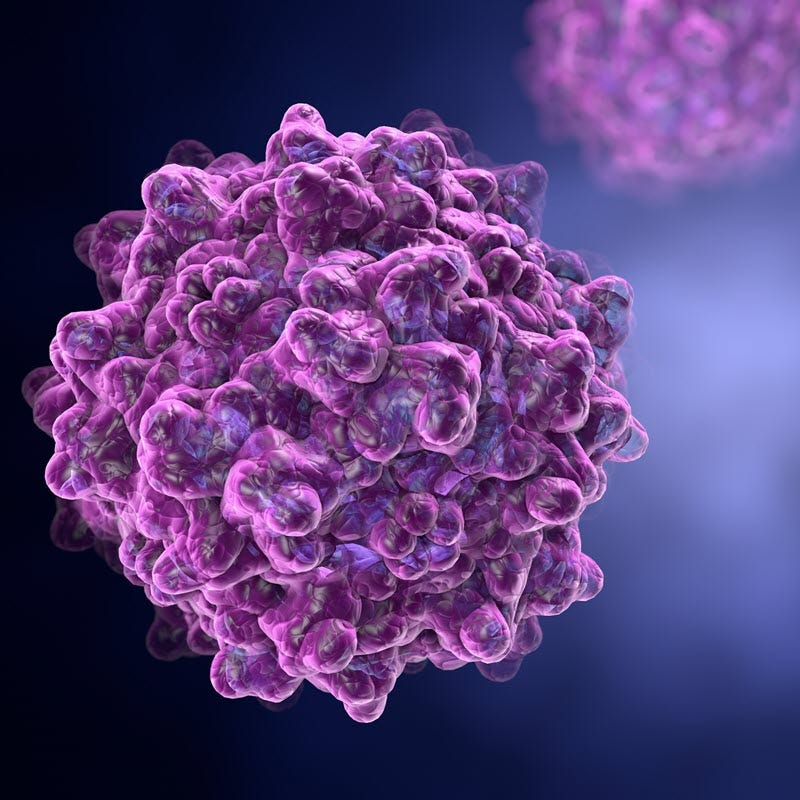Sarepta, Elevidys, and the Future of AAV Gene Therapy
Part 2 of a mini-series on gene therapies, from the perspective of a scientist and an investor.
Welcome back to Biotech Blueprint!
In this week’s special episode, I again teamed up with Hartaj Singh from the Biotech Capital Compass to continue our discussion on gene therapies. We covered a lot in this episode, but mainly focused on Sarepta, including its recent patient deaths, regulatory setbacks, and the future of its AAV platform. We also discussed the broader implications for gene therapy safety, investor sentiment, and how regulators are recalibrating their stance on high-risk, high-reward treatments in rare diseases.
We recorded the episode on July 24, 2025, just days before the FDA recommended lifting the hold on Elevidys for ambulatory patients, which is a move Hartaj predicted on the show. In this article, I unpack what’s happened since and what it means for Sarepta’s future.
For a more investor-oriented breakdown, you can also read Hartaj’s excellent companion article here:
Why Sarepta’s AAV platform is under review
Over the past few months, Sarepta Therapeutics has found itself in the middle of a crisis that could reshape its trajectory, and possibly the broader narrative around AAV-based gene therapies.
The trouble began in March 2025, when a 16-year-old boy died of acute liver failure shortly after receiving Elevidys, Sarepta’s FDA-approved gene therapy for Duchenne muscular dystrophy (DMD). At the time, Elevidys had received accelerated approval in ambulatory boys aged 4 to 5 and was widely seen as a flagship product for the company’s AAVrh74 platform. Just a month later, in April, Sarepta and its partner Roche paused three European trials at the request of the EMA. Then in June, a second DMD trial participant died under similar circumstances, prompting Sarepta to halt Elevidys dosing in non-ambulatory patients and begin discussions with the FDA about new safety protocols.
But the real inflection point came in mid-July, when a third death was reported, this time involving a 51-year-old patient in a limb-girdle muscular dystrophy (LGMD) trial using the same AAVrh74 vector. The FDA responded swiftly and Sarepta was asked to voluntarily pause all Elevidys shipments in the U.S., while the agency placed a clinical hold on four ongoing LGMD trials, including SRP-9003. It also revoked Sarepta’s AAV platform designation, a rare and public signal of diminished confidence in the safety of the vector across indications.
Initially, Sarepta resisted halting Elevidys distribution, citing the lack of new safety signals in ambulatory DMD patients. But under increasing pressure from regulators, analysts, and advocacy groups, and following criticism for delayed disclosure of the third death, the company reversed course. On July 22, Sarepta paused all U.S. shipments, agreed to add a black box warning to the Elevidys label, and announced plans to strengthen its immunosuppression strategy.
The deaths weren’t caused by the therapeutic gene itself, but by the body’s immune reaction to the AAV viral vector commonly used in systemic gene therapies. At high doses, especially in more fragile, non-ambulatory patients, AAV vectors can trigger a strong T cell-mediated attack on the liver. Sarepta is now testing enhanced immunosuppression strategies, but until that approach proves reliable, regulators remain cautious.
International markets were affected as well. Roche halted new Elevidys shipments in countries that defer to FDA guidance, including Japan and parts of the Gulf region. In independently regulated markets like Brazil, distribution continued, but not without further controversy. On July 25, the FDA revealed it was investigating the death of an 8-year-old Brazilian boy who had received Elevidys in June. The news sent Sarepta’s stock tumbling further.
By July 26, Sarepta and Roche issued statements clarifying that the Brazilian death was unrelated to Elevidys. The FDA later confirmed that finding, but the damage to regulatory and investor confidence was already done.
A limited reprieve and a narrow path forward
Then, on July 28, Sarepta received its first encouraging news in weeks: the FDA recommended lifting the hold on Elevidys for ambulatory patients, stating that the Brazilian case was unrelated and that access could resume under updated safety protocols. The agency made it clear, however, that non-ambulatory patients remain under hold, and that new clinical studies will likely be required to fully reestablish Elevidys’ reach in this broader population.
During our July 24 podcast, Hartaj predicted this exact outcome, a partial resumption of access, and he was right. I also expected the FDA might eventually move in this direction, though I was surprised by how quickly it happened.
The FDA’s decision offered a modest but important step toward recovery. Still, it doesn’t resolve the deeper questions Sarepta now faces. Its gene therapy platform remains under intense scrutiny, its credibility with investors is bruised, and its revenue outlook, particularly from LGMD trials and non-ambulatory DMD use, remains cloudy. Brokerages like H.C. Wainwright have slashed their price targets, some warning of existential risk if Sarepta cannot restore commercial and regulatory momentum.
Yet others, including Hartaj, argue this is a painful reset, not the end. With ambulatory Elevidys access partially restored, Sarepta now has a narrow window to rebuild trust, in its science, its strategy, and its transparency.
This isn’t the first time Sarepta has faced regulatory turbulence. As Hartaj notes in his article, the company’s first DMD therapy, Exondys 51, was approved in 2016 despite inconclusive efficacy data and a narrow 7-6 advisory committee vote against approval, a decision so contentious it led to internal FDA resignations. And yet, the drug went on to gain prescriber support, payer coverage, and commercial traction.
The parallels to Elevidys are striking: surrogate endpoints, internal FDA disagreement, and a deeply polarized investor response. But this time, the stakes are higher. The safety risks are more serious. The vector platform is under direct FDA scrutiny. And investor trust, once Sarepta’s greatest asset, is on thinner ground.
Still, Sarepta’s history suggests recovery is possible. If it can stabilize access, prove out a revised immunosuppression strategy, and align more closely with regulators, this moment could mark a reset, not a collapse.
DISCLAIMER: This content is for informational purposes only. It should not be taken as legal, tax, investment, financial, or other advice. The views expressed here are my own and do not reflect the opinions of any company or institution.
DISCLOSURE: I have no business relationships with any company mentioned in this article.








